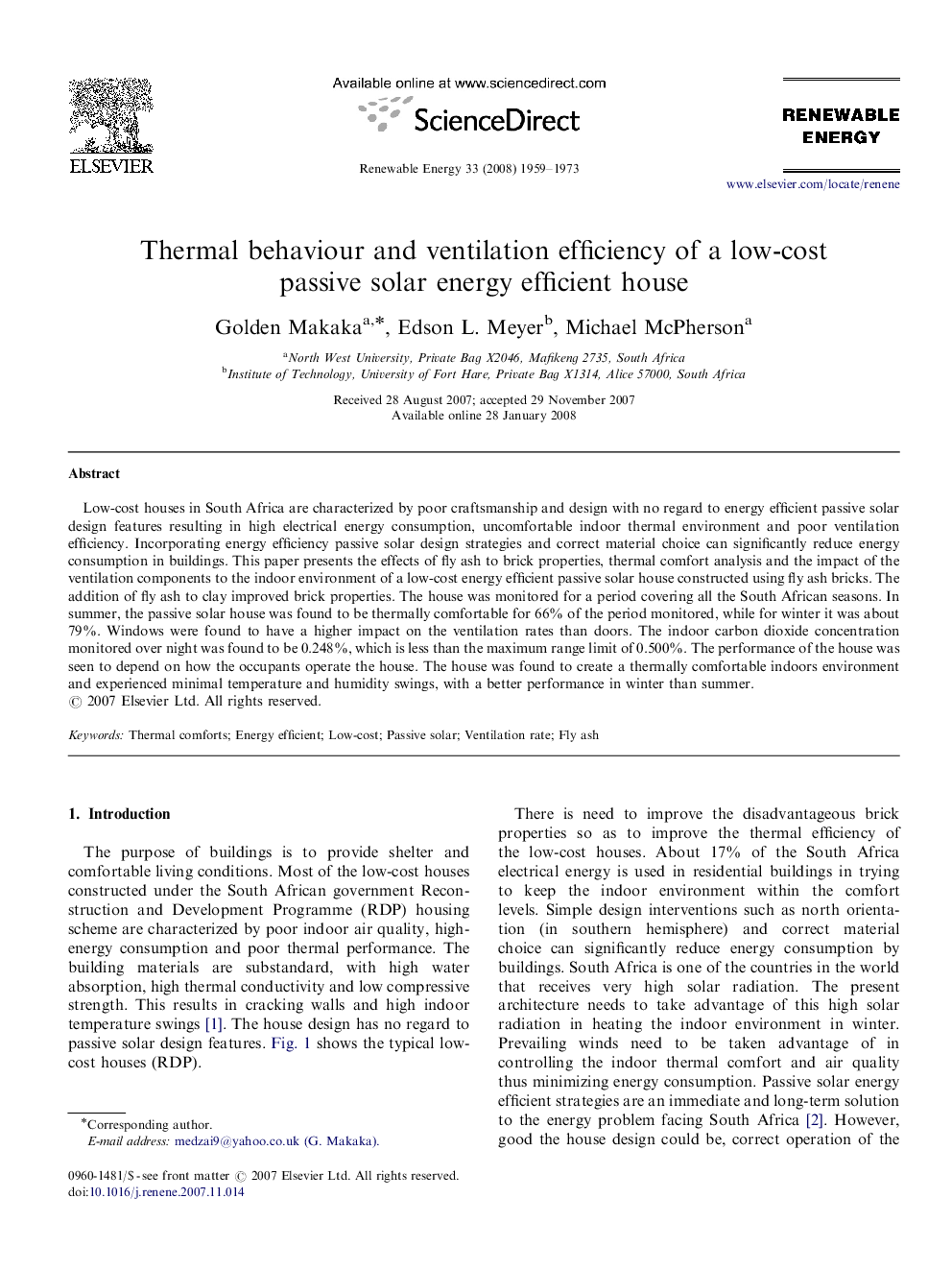| Article ID | Journal | Published Year | Pages | File Type |
|---|---|---|---|---|
| 302301 | Renewable Energy | 1973 | 15 Pages |
Low-cost houses in South Africa are characterized by poor craftsmanship and design with no regard to energy efficient passive solar design features resulting in high electrical energy consumption, uncomfortable indoor thermal environment and poor ventilation efficiency. Incorporating energy efficiency passive solar design strategies and correct material choice can significantly reduce energy consumption in buildings. This paper presents the effects of fly ash to brick properties, thermal comfort analysis and the impact of the ventilation components to the indoor environment of a low-cost energy efficient passive solar house constructed using fly ash bricks. The addition of fly ash to clay improved brick properties. The house was monitored for a period covering all the South African seasons. In summer, the passive solar house was found to be thermally comfortable for 66% of the period monitored, while for winter it was about 79%. Windows were found to have a higher impact on the ventilation rates than doors. The indoor carbon dioxide concentration monitored over night was found to be 0.248%, which is less than the maximum range limit of 0.500%. The performance of the house was seen to depend on how the occupants operate the house. The house was found to create a thermally comfortable indoors environment and experienced minimal temperature and humidity swings, with a better performance in winter than summer.
